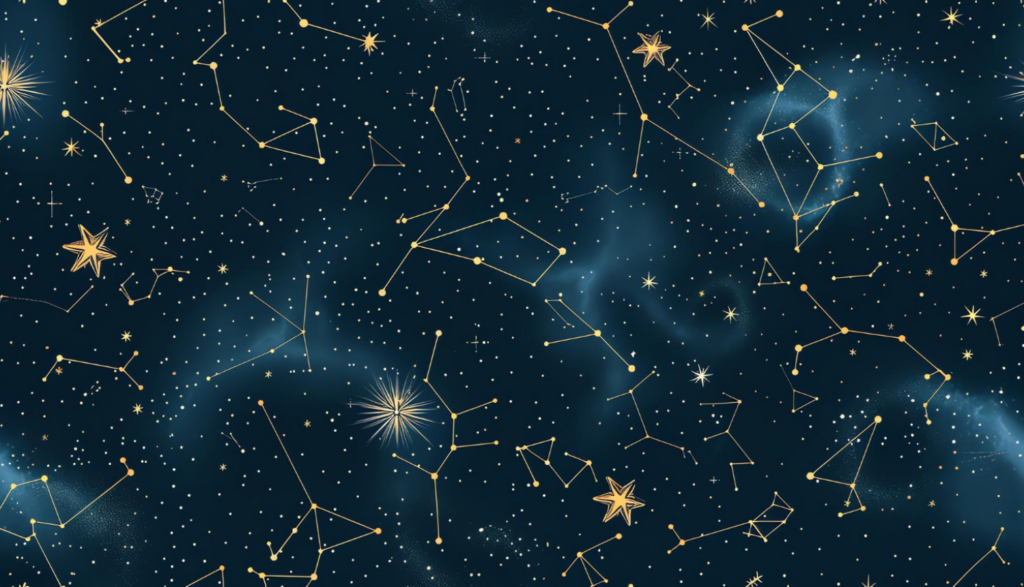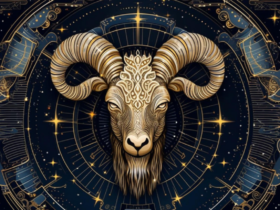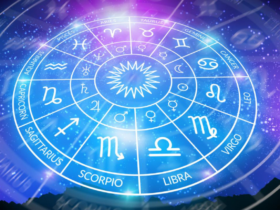The night sky has captivated human imagination for centuries, with its intricate patterns of stars that seem to form shapes and symbols across the celestial sphere. These constellations, composed of groups of stars, have been interpreted as representations of gods, animals, heroes, and mythological creatures, serving as a bridge between the earthly and the divine. But beyond their role in astronomy, constellations hold a unique place in the world of astrology, shaping the myths and archetypes that influence how many perceive personality traits and cosmic influences.
The Origin of Constellations in Mythology
Ancient cultures such as the Babylonians, Greeks, Egyptians, and Chinese mapped the night sky, giving names and stories to the constellations. These early interpretations often reflected the cultural values and myths of their time, turning the heavens into a mirror of human experience. For example, the constellation of Orion, a mighty hunter in Greek mythology, is known for its prominent stars and is tied to tales of strength and pursuit. Similarly, the twelve constellations of the zodiac, like Virgo, Pisces, and Taurus, were associated with gods and cosmic forces, forming the foundation of astrological belief systems.
The Greek pantheon is especially significant in shaping the zodiac. Each of the zodiac signs is tied to myths involving gods and legendary figures. Aries, for example, is connected to the Golden Ram in Greek myth, whose golden fleece was the target of Jason and the Argonauts’ quest. This connection gives Aries its symbolism of leadership, courage, and adventure. Similarly, Sagittarius is often represented as a centaur, an archer aiming at a distant goal, embodying the spirit of exploration and pursuit of knowledge.
The Role of Constellations in Astrological Interpretations
In astrology, constellations do more than serve as mythological symbols, they influence how astrologers interpret the traits and tendencies of individuals. The zodiac signs, each named after a constellation, correspond to twelve distinct archetypes that are believed to shape personalities and destinies. Astrologers view these constellations as celestial blueprints, influencing the qualities of those born under their signs. For example, people born under the sign of Leo are often described as possessing qualities of leadership and charisma, reflecting the regal nature of the constellation’s mythological connection to the Nemean Lion.
The positioning of these constellations in the sky during a person’s birth is believed to imbue certain characteristics and tendencies. This is why the concept of a “birth chart” or “natal chart” is crucial in astrology. The alignment of the sun, moon, and planets with the zodiac constellations is thought to reveal insights into an individual’s personality, strengths, and challenges. This interpretation weaves together astronomy and storytelling, blending science with a spiritual understanding of the cosmos.
Related: The Cosmic Soul: Zodiac Signs and Their Connection to Universal Energy

Archetypal Themes in Constellations
Constellations represent more than just physical patterns, they embody archetypal themes that are universal across cultures. These themes touch on love, heroism, fate, transformation, and the eternal struggle between light and darkness. For example, the constellation Scorpio, associated with the myth of the scorpion sent to kill Orion, embodies themes of death, rebirth, and intensity. This translates into the astrological traits of Scorpio, which are often described as passionate, intense, and transformative.
The constellation of Virgo is tied to the myth of Demeter and Persephone, capturing themes of harvest, nurturing, and cycles of life and death. In astrology, Virgo is seen as detail-oriented, practical, and nurturing, mirroring the archetypal story of a goddess who oversees the growth and abundance of the earth. Such connections create a rich tapestry of meanings, allowing individuals to see their lives through a cosmic lens, where human experiences are reflected in the movements of stars.
The Enduring Appeal of Astrological Myths
Why do these ancient myths and constellations continue to hold such fascination? Part of their enduring appeal lies in their ability to make the abstract nature of the cosmos tangible. The constellations serve as a celestial storytelling medium, providing a sense of structure to the vastness of the universe. They help people find patterns and meanings in their lives, offering a sense of connection to something greater than themselves.
Moreover, the symbolism of the constellations provides a way to explore deep psychological truths. Astrological archetypes, rooted in these starry formations, allow for introspection and understanding of inner dynamics. Whether one views astrology as a literal science or a poetic expression of human nature, the constellations provide a framework for reflecting on identity, relationships, and personal growth.
Conclusion: A Cosmic Mirror of Human Stories
Constellations are more than clusters of stars; they are reflections of humanity’s quest to understand the universe and our place within it. Through their connection to myth and astrology, they offer a timeless language that links us to ancient wisdom while guiding personal insight. The stories woven into these constellations reveal the power of narrative to shape our understanding of the cosmos. By studying the stars, we find a mirror for our own struggles, aspirations, and transformations—a celestial map that connects us to the mysteries of the universe, past and present.
Related: Cancer’s Path to Success: Using Astrology for Personal Growth





















